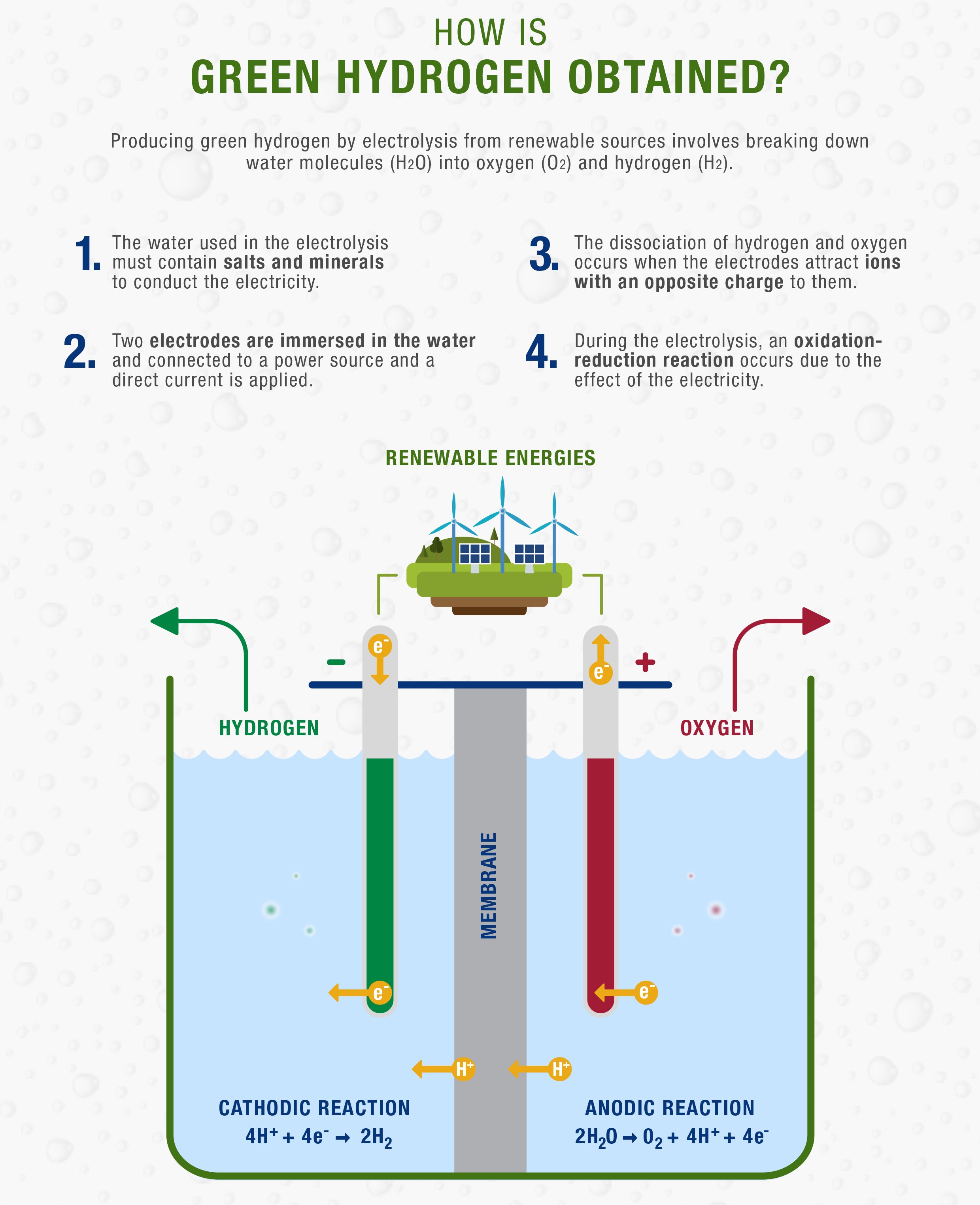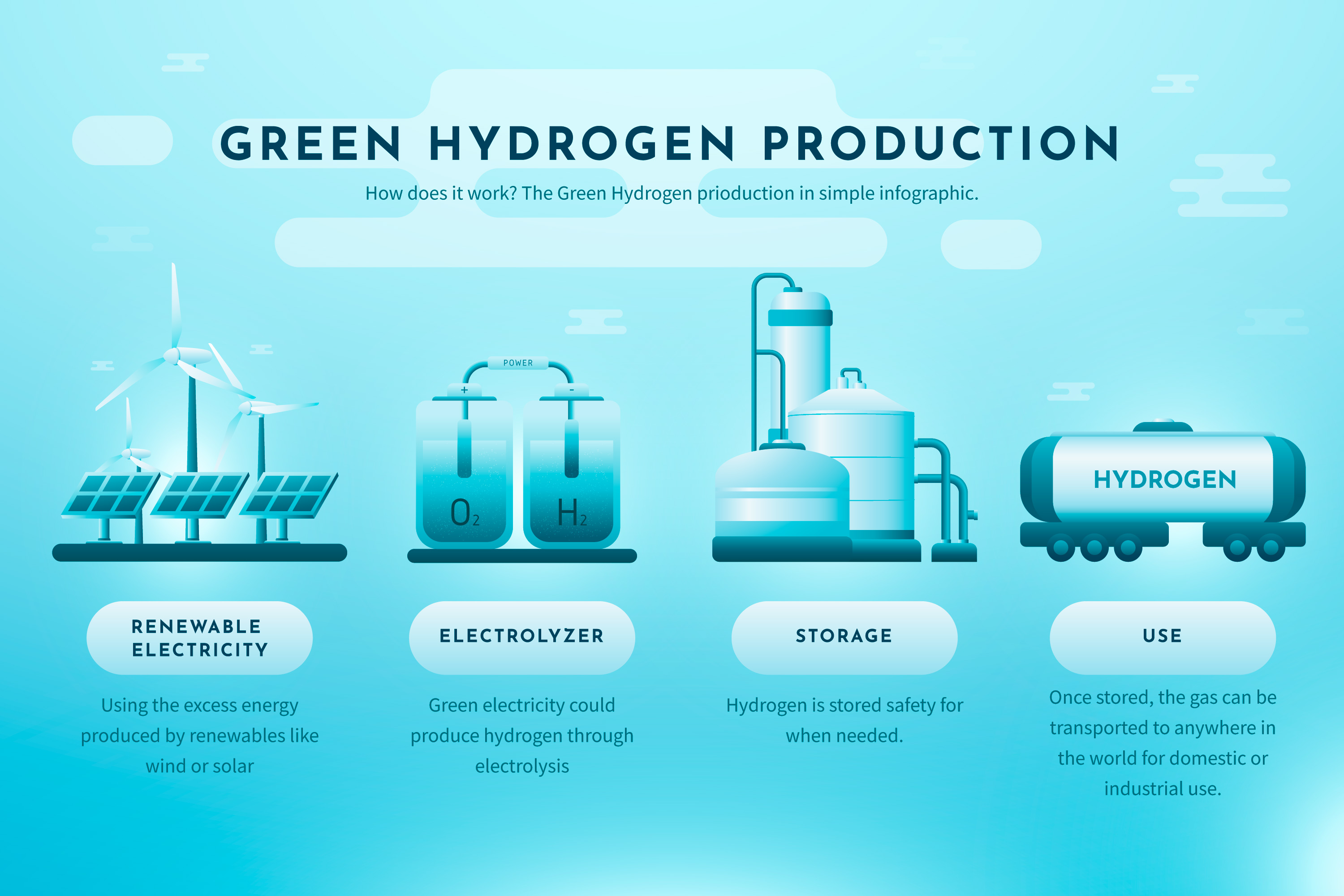
What is green hydrogen and how is it obtained?

What colour is hydrogen, and why does a colourless gas get so many colourful names?
Green hydrogen
Green hydrogen is produced by using clean electricity from renewable energy sources such as solar or wind power to electrolyse water. Electrolysers use an electrochemical reaction to separate water into its hydrogen and oxygen components, and emit zero carbon dioxide in the process. Green hydrogen currently accounts for a small percentage of total hydrogen because it is expensive to produce. As the price of energy from wind power has fallen, so will the price of green hydrogen as it becomes more widespread.
Blue hydrogen
Blue hydrogen is produced mainly from natural gas, using a process called steam reforming, which brings together natural gas and heated water in the form of steam. The output is hydrogen, but carbon dioxide is also produced as a by-product. So, the definition of blue hydrogen includes the use of carbon capture and storage (CCS) to trap and store this carbon. Blue hydrogen is sometimes described as ‘low-carbon hydrogen’, as the steam reforming process doesn’t actually avoid the creation of greenhouse gases.
Grey hydrogen
Currently, this is the most common form of hydrogen production. Grey hydrogen is created from natural gas, or methane, using steam methane reformation but without capturing the greenhouse gases made in the process. Grey hydrogen is essentially the same as blue hydrogen, but without the use of carbon capture and storage.
Black and brown hydrogen
Using black coal or lignite (brown coal) in the hydrogen-making process, these black and brown hydrogen are the absolute opposite of green hydrogen in the hydrogen spectrum and the most environmentally damaging. Just to confuse things, any hydrogen made from fossil fuels through the process of ‘gasification’ is sometimes called black or brown hydrogen interchangeably. Japan and Australia announced a new brown coal-to-hydrogen project recently. This project will use brown coal in Australia to produce liquefied hydrogen, which will then be shipped to Japan for low-emission use.
Pink hydrogen
Pink hydrogen is generated through electrolysis powered by nuclear energy. Nuclear-produced hydrogen can also be referred to as purple hydrogen or red hydrogen. In addition, the very high temperatures from nuclear reactors could be used in other hydrogen productions by producing steam for more efficient electrolysis or fossil gas-based steam methane reforming.
Turquoise hydrogen
This is a new entry in the hydrogen colour charts and production has yet to be proven at scale. Turquoise hydrogen is made using a process called methane pyrolysis to produce hydrogen and solid carbon. In the future, turquoise hydrogen may be valued as a low-emission hydrogen, dependent on the thermal process being powered with renewable energy and the carbon being permanently stored or used.
Yellow hydrogen
Yellow hydrogen is a relatively new phrase for hydrogen made through electrolysis using solar power.
White hydrogen
White hydrogen is a naturally occurring, geological hydrogen found in underground deposits and created through fracking. There are no strategies to exploit this hydrogen at present.

Green hydrogen as the future of energy
- 100 % sustainable: green hydrogen does not emit polluting gases either during combustion or during production.
- Storable: hydrogen is easy to store, which allows it to be used subsequently for other purposes and at times other than immediately after its production.
- Versatile: green hydrogen can be transformed into electricity or synthetic gas and used for commercial, industrial or mobility purposes.
- High cost: energy from renewable sources, which are key to generating green hydrogen through electrolysis, is more expensive to generate, which in turn makes hydrogen more expensive to obtain.
- Safety issues: hydrogen is a highly volatile and flammable element and extensive safety measures are therefore required to prevent leakage and explosions.
Source: U.S. Department of Energy and Wood Mackenzie
Source: infographic - Iberdrola, S.A.

